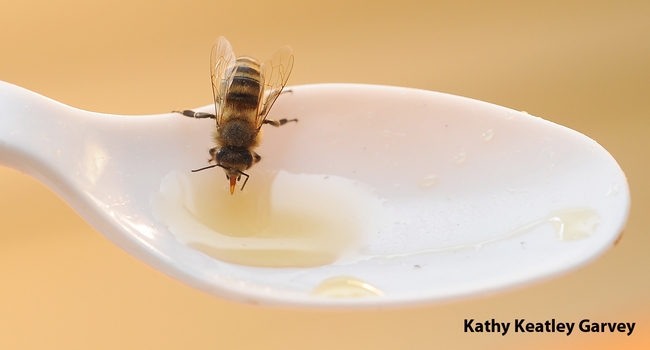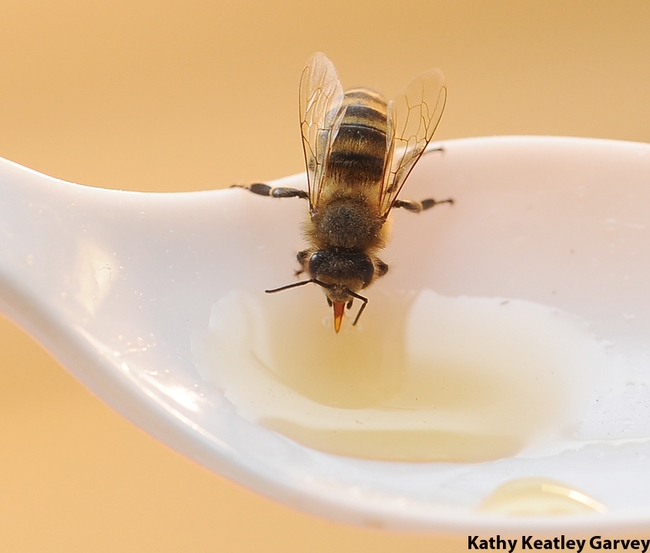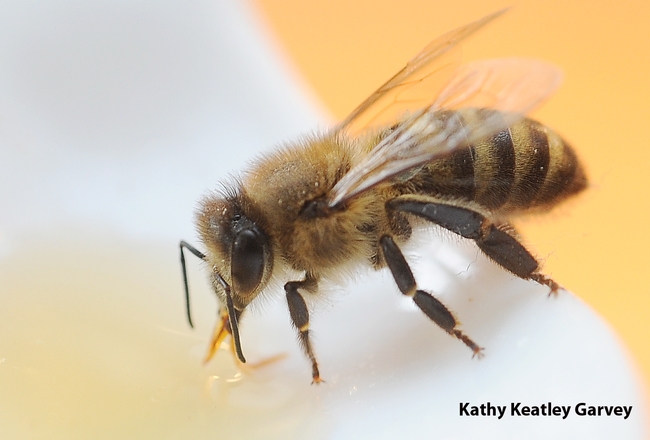Honey!
Today at the Harry H. Laidlaw Jr. Honey Bee Research Facility at the University of California, Davis, we borrowed a plastic spoon and offered a taste of honey to newly emerged honey bees.
It was their sisters' making and now it was theirs. And soon, they will be making their own.
Norman Gary, emeritus professor of entomology at UC Davis and author of the newly published book, Honey Bee Hobbyist, the Care and Keeping of Bees, writes that "When all conditions are ideal (good weather, long days, intense nectar secretion and very populous colonies), bees can collect enormous quantities of nectar--perhaps around 6 pounds or more in one day--yielding around 2 to 3 pounds of honey per day."
Still, we often hear folks complain about humans stealing honey from the hives.
"Bees consume most of the honey they make," writes Gary, who has kept bees for more than six decades and continues his work as a professional bee wrangler. "Honey is primarily food for them and secondarily a treat for us because they produce more than the require for sustenance, which is 200 pounds per colony annually. The extra honey--anything over 200 pounds--is known as 'surplus' honey because it can be harvested without jeopardizing colony survival."
However, hobby beekeepers usually expect to produce around 100 pounds of honey per hive, he says.
That's definitely more than just a taste of honey!
Attached Images:

Honey bee sipping honey in the Harry H. Laidlaw Jr. Honey Bee Research Facility, UC Davis. (Photo by Kathy Keatley Garvey)

Close-up of bee sipping honey. (Photo by Kathy Keatley Garvey)

Honey bee quickly finds the honey in a spoon. (Photo by Kathy Keatley Garvey)